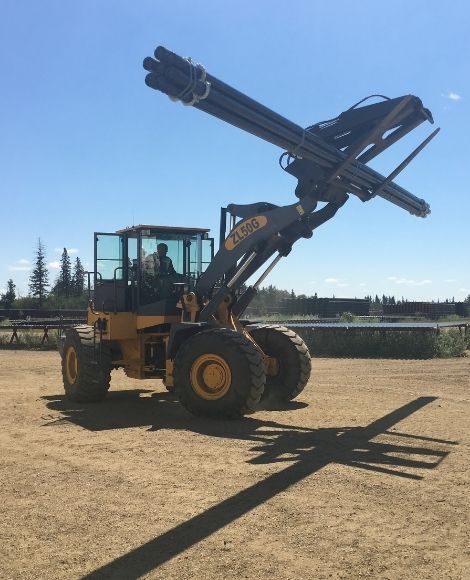AFSC Training advantage
Our Mission
To prevent workplace fatalities and injuries by teaching operators to anticipate, recognize, and avoid dangerous situations. We do this by providing the highest quality and most engaging on-site safety training programs based on expert experience, intelligent application, and the latest technical innovations.

What we do
AFSC provides your business with professional on-site safety training and certification for all your mobile equipment needs. Our training systems are catered to both experienced and novice operators alike. If your business has powered mobile equipment, AFSC is your on-site safety training solution.
About the alberta forklift safety council
The Alberta Forklift Safety Council was started 20 years ago by a small group of experienced tradespeople (mainly Heavy Duty Mechanics) who have worked with heavy equipment their entire careers. Our advantage is our deep knowledge of the mechanics of heavy equipment and a comprehensive understanding of the work situations that surround them. Our experience working with the most skilled operators in Alberta and our thorough familiarity of Alberta OH&S regulations and legislation - allow us to build highly relevant, thought provoking courses.
The on-site Training Advantage
The Alberta Forklift Safety Council is committed to delivering the most effective and relevant safety courses possible. One of the ways we achieve this is to train and test your employees at their worksite on the equipment they use day to day. This helps to ensure maximum familiarity with their equipment, minimizing the risk of future incidents. Instead of sending your employees to an off-site training facility - to be trained on an unfamiliar piece of equipment which may not align with what is used in your workplace, give us a call and we’ll come to you.
Available all across Alberta
Based out of Canmore, Alberta, AFSC has instructors stationed throughout the province to meet your safety training requirements, wherever, and whenever they may be.
Legislation
Section 15 - Safety Training
Employers must ensure that their workers are trained in the safe operation of the equipment that the workers are required to operate.
An employer must ensure that the training includes the following :
- The selection of the appropriate equipment.
- The limitations of the equipment.
- An operator’s pre‑use inspection.
- The use of the equipment.
- The operator skills required by the manufacturer’s specifications for the equipment.
- The basic mechanical and maintenance requirements of the equipment.
- Loading and unloading the equipment if doing so is a job requirement.
- The hazards specific to the operation of the equipment at the work site.
Occupational Health & Safety Act - Alberta Regulation 62/2003
Section 14 - Duties of Workers
A worker who is not competent to perform work that may endanger the worker or others must not perform the work except under the direct supervision of a worker who is competent to perform the work.
A worker must immediately report to the employer equipment that :
- Is in a condition that will compromise the health or safety of workers using or transporting.
- Will not perform the function for which it is intended or was designed.
- Is not strong enough for its purpose.
- Has an obvious defect.
Occupational Health & Safety Act - Alberta Regulation 62/2003
Section 12 - Equipment
An employer must ensure that all equipment used at a work site :
- Is maintained in a condition that will not compromise the health or safety of workers using or transporting it.
- Will safely perform the function for which it is intended or was designed.
- Is of adequate strength for its purpose.
- Is free from obvious defects.
If a worker is required under the Act, the regulations or the adopted code to use or wear specific equipment, the employer must ensure that the worker uses or wears the equipment at the work site.
Occupational Health & Safety Act - Alberta Regulation 62/2003
AFSC Course Standards
All AFSC programs, including content and structure, meet or exceed all existing regulations and standards, including OSHA 29 (CFR 1910.178), Canada Labour Code (R.S.C., 1985, c. L-2, plus Part II), Alberta Occupational Health and Safety Code 2009, Canadian Safety and Health Regulations (SOR/86-304), WCB Alberta, CSA (B335-04) ANSI/ITSDF B56.1-2012
Alberta Forklift Safety Council © Copyright 2001 - 2021 All Rights Reserved
Privacy Policy
